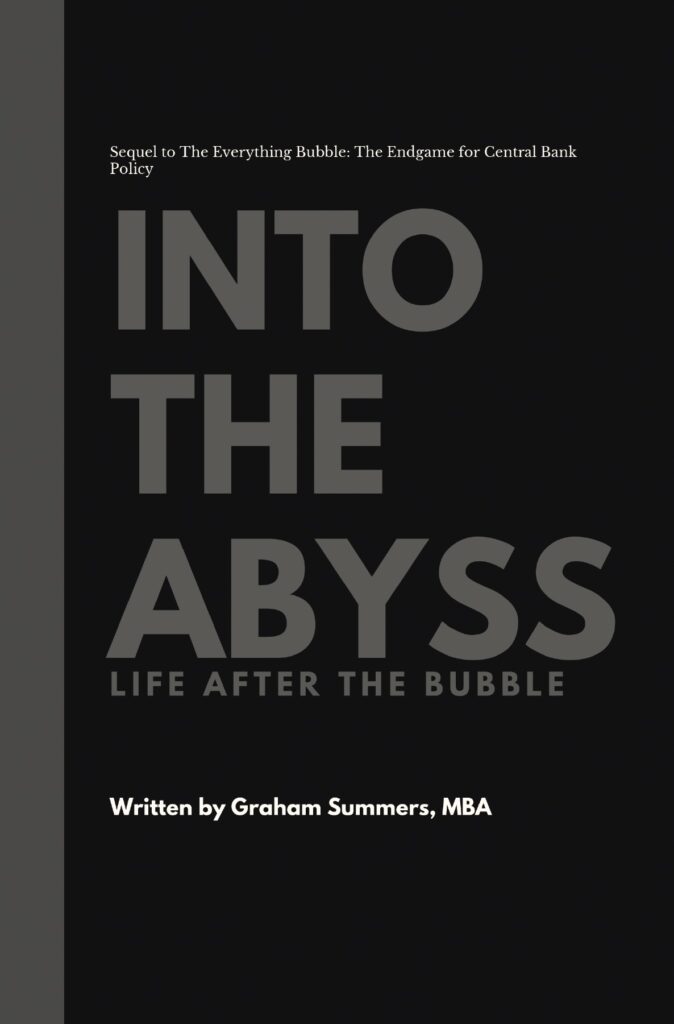In order to understand why we’re at risk of the financial system collapsing, you first need to understand how the global banking system works. When you or I buy an asset (say a house, or shares in a stock, or a Treasury bond), we do so because we’re looking to increase our wealth through either capital gains or through the income that asset will pay us in exchange for us parking our capital there.
In simple terms, you’re putting/ lending your money somewhere (especially if you’re buying a bond) in the hope of increasing the value or your money.
This is not how banks work. When a bank buys something, especially a bond, it parks that bond on its balance sheet as an “asset.” It then lends money out against that asset. This in of itself is not problematic except for the fact that the financial modeling of 99% of banks base assume that sovereign bonds are “risk-free.” Put another way, these models assume that the banks will always get their money back on 100 cents on the Dollar.
Yes, you read that correctly, despite the fact that world history is replete with examples of sovereign defaults (in the last 20 years alone we’ve seen more than 15 including countries as significant as Russia, Argentina, and Brazil), most banks assume that the sovereign bonds sitting on their balance sheets are risk free.
This phenomenon occurs worldwide, but given that it will be Europe, not the US that takes the system down, I’m going to focus on European bank models/ capital ratios.
You may or may not be familiar with EU banking law. EU banks are meant to comply with Basel II which is a series of capital requirements and other specifications meant to limit systemic risk.
In terms of capital ratios, Basel II requires that EU banks have equity and Tier 1 capital equal to 6% of risk weighted assets. On paper this idea was supposed to limit bank leverage to 16 to 1 (the bank has €1 in capital or equity for every €16 in loans).
However, the term “risk weighted assets” destroys this premise because it means that the bank’s loan portfolio and ultimately its leverage ratio are based on the bank’s in house models/ assumptions concerning the risk of its loans.
Let me give you an example…
Let’s say XYZ Bank lends out €50 million to a corporation. The bank won’t necessarily claim that all €50 million is “at risk.” Instead, the bank will claim that only a percentage of this €50 million is “at risk” based on the company’s credit rating, financial records (debt to equity, etc), and the like.
Thus, based on “in-house” risk modeling, European banks could in fact lend out much, much more than the Basel II requirements would imply. Considering that both bank profits and executive compensation were/are closely tied to more lenient definitions of “risk-weighted,” (i.e. lend as much as you possibly can) it’s safe to assume that EU banks are in fact much, much more leveraged.
Indeed, according to the IMF’s “official” analysis, EU banks as a whole are leveraged at 26 to 1. I would argue that in reality many of them are well north of 30 to 1 and possibly even up to 50 or 100 to 1.
The reason I can claim this with relative certainty is because the EU housing bubbles dwarfed that of the US. In the chart below the US housing bubble is the lowest line. After it comes Britain (blue) and Italy (orange) then Ireland (green) and finally Spain (dark blue).
You can only get bubbles of this magnitude if you’re lending to literally anyone with a pulse. And you can only lend that much if your in-house risk models believe that the risk of lending to anyone with a pulse is much, much lower than reality.
Hench, EU banks are likely leveraged at much, much more than 26 to 1. Indeed, considering how leveraged and toxic US banks’ (especially the investment banks’) balance sheets became from the US housing bubble, the above chart should give everyone pause when they consider the TRUE state of EU bank balance sheets.
This fact in of itself makes the possibility of a systemic collapse of the EU banking system relatively high. Let me give you an example to illustrate this point.
Let’s assume Bank XYZ in Europe has a loan portfolio of €300 million Euros and equity of €30 million Euros. This means the bank is “officially” leveraged at 10 to 1 (this would be a great leverage ratio for a European bank as most of them are leveraged to at least 26 to 1 or worse).
So… let’s say that 10% of the bank’s loans (read: assets) are in fact worth 50% of the value that the bank claims they’re worth (not unlikely if you’re talking about a PIIGS bank). This means that the bank’s actual loan portfolio is worth €285 million (10% of 300 is 30 and 50% of 30 is 15).
With equity of only €30 million, the bank, at some point, will have to take writedowns or one time charges on its loan portfolio that would erase HALF of its equity. At this point, the bank becomes leveraged at 19 to 1 (€285 million in assets on €15 million in equity).
This announcement would result in:
1) Depositors pulling their funds from the bank (thereby rendering it even more insolvent)
2) The bank’s shares plunging on the market (raising its leverage levels even higher as equity falls further).
Thus, at a leverage ratio of 10 to 1, even a 50% hit on 10% of a bank’s loan portfolio can result in the bank needing a bailout or even collapsing.
Now, what if that €300 million in loans is actually the amount the bank’s in-house risk models believe to be “at risk” and the REAL loan portfolio is around €800 million?
Immediately, we realize that the bank is in fact leveraged at 26 to 1. At this level even a 4% drop in asset prices erases ALL equity rendering the bank insolvent.
And yet, based on Basel II requirements, this bank can claim in all public disclosures that it is only leveraged at 10 to 1. With this in mind, you should understand why the banks lobbied so hard against a rapid implementation of Basel III capital requirements (which would require equity and capital equal to 10.5% of all of risk-weighted assets.)
Indeed, Basel III requirements which were meant to go in effect at the end of 2012 will now gradually begin to be implemented in 2013. And banks will have until 2015 to adjust to the new capital requirements and until 2019 conservation buffers in place.
With that in mind, take my XYZ bank example, apply it to all of Europe, assume leverage ratios of 26 to 1 at the very minimum (Lehman blew up when it was leveraged at 30 to 1), and take another look at the housing bubbles in the above chart.
In simple terms Europe’s entire €46 trillion banking system is in far worse shape than even the US investment banks were going into 2008. And this is based on their leverage ratios alone.
Now, let’s take this process further…
Historically, most depositor banks made their money on the spread between the interest rates they pay depositors and the interest they receive on the loans they make. This is why they were so highly incentivized to leverage themselves to the gills.
Given that a bank’s share price and executive compensation are closely tied to its profits, you can imagine just why a bank would want to leverage itself as much as possible.
Even under this traditional banking model, Europe would be at high risk of systemic collapse. However, thanks to the fact that many large banks have shifted into trading as a means of generating profits, there’s a second even more frightening reason why the EU banking system will very likely implode. It’s the multi-trillion Dollar “smoking gun.”
I’d like to share this information with you… the only problem is that my private clients are paying me to provide them with this information. So as much as I think people need to hear it, I have to honor their trust and their confidence and not make this information free.
However, you can access it via my Private Wealth Advisory newsletter.
As I mentioned earlier this week, Private Wealth Advisory costs $329. When you consider that I’ve not only uncovered information pertaining to the financial system that almost NO ONE in the world knows about… as well as the fact that I’ve shown subscribers 72 straight winning trades over the last year (and we haven’t closed a single loser over that time), $329 seems a mere pittance.
After all, it’s just $0.90 per day… less than the cost of a cup of coffee.
So if you’re ready to take the plunge and face the cold hard facts of the financial system, I highly suggest you take out a subscription to Private Wealth Advisory. I’ll not only explain to you the risks that 99.9% of analysts are unaware of, but I’ll show you how to profit from all of this (and yes, you can profit during Crises, my clients did in 2008 and they will again this time around).
To find out more about Private Wealth Advisory…
Graham Summers
Chief Market Strategist
Phoenix Capital Research




